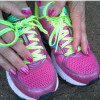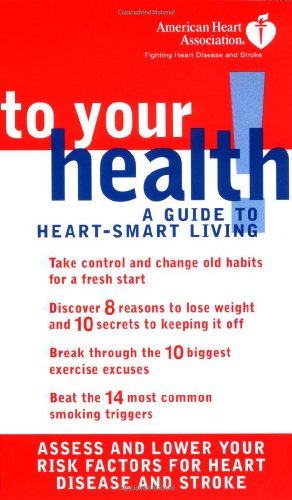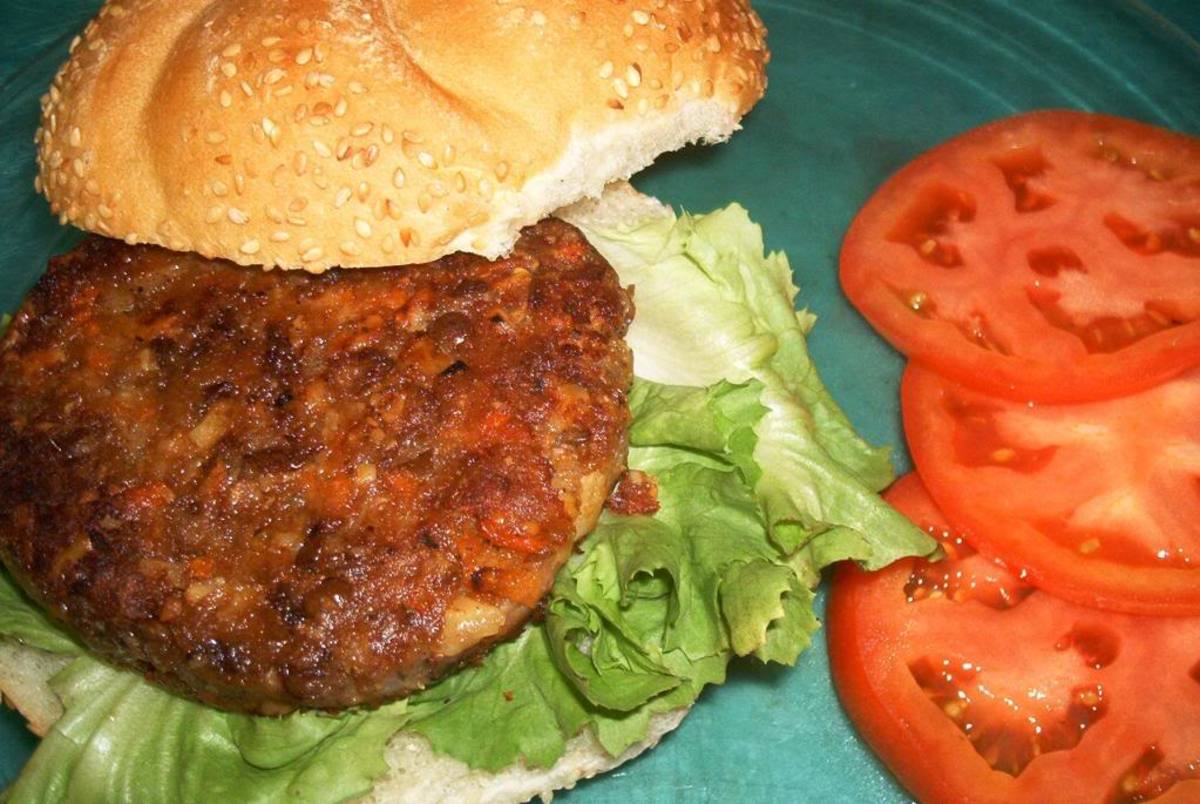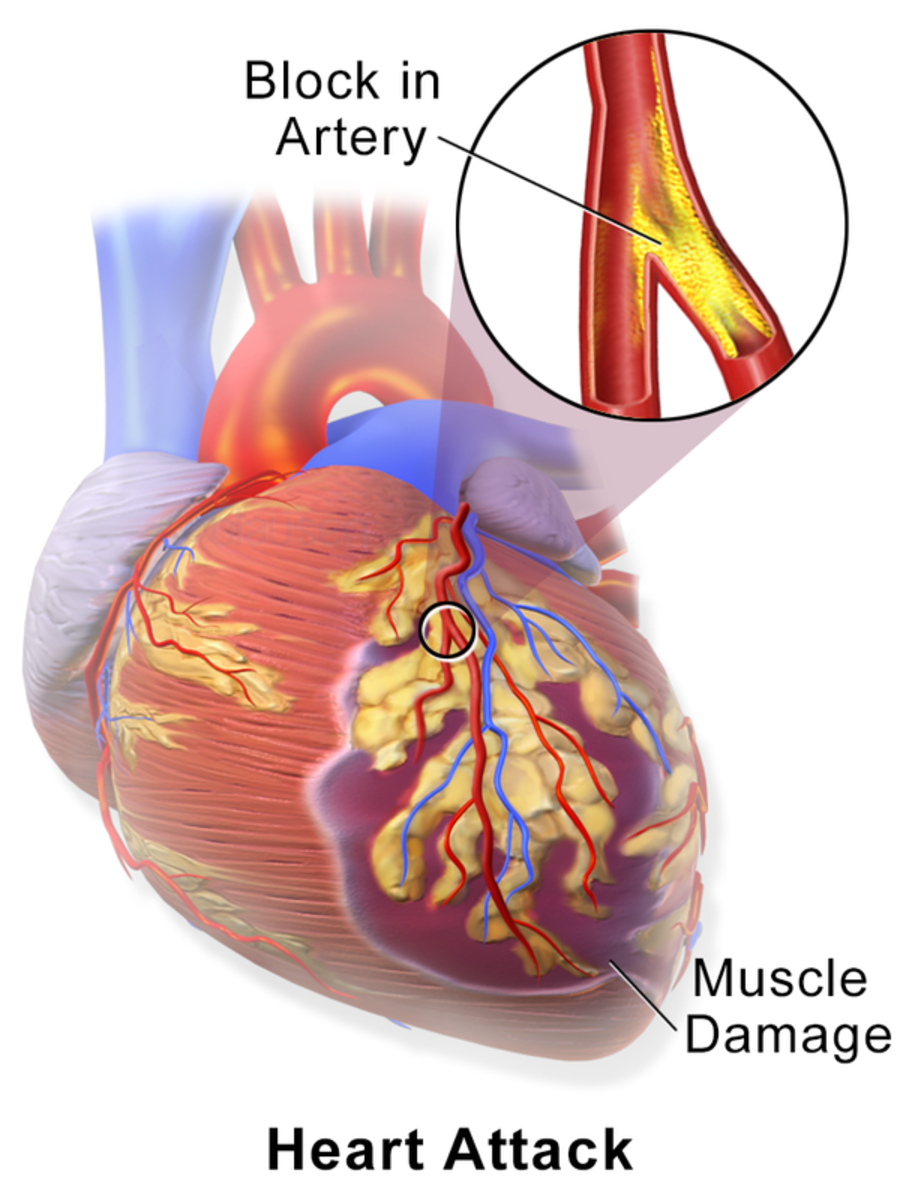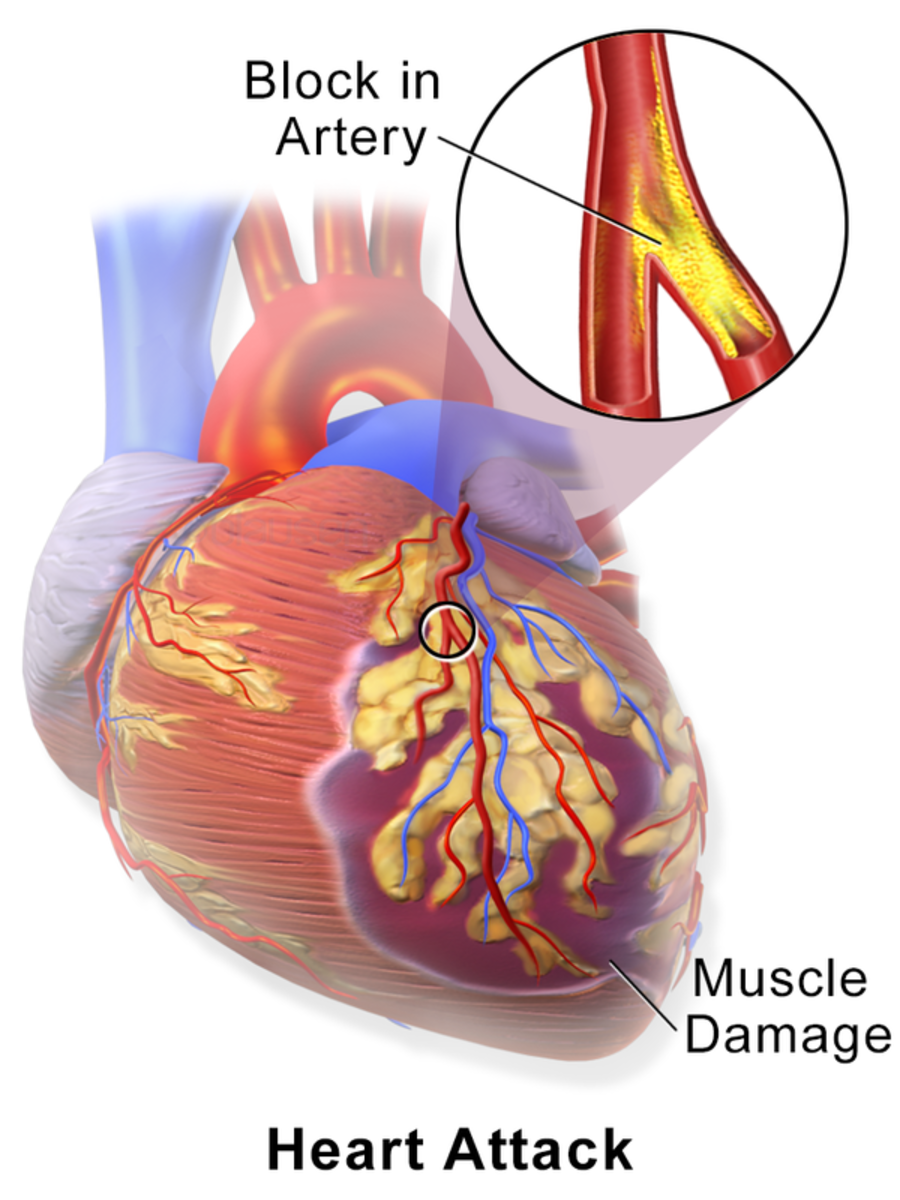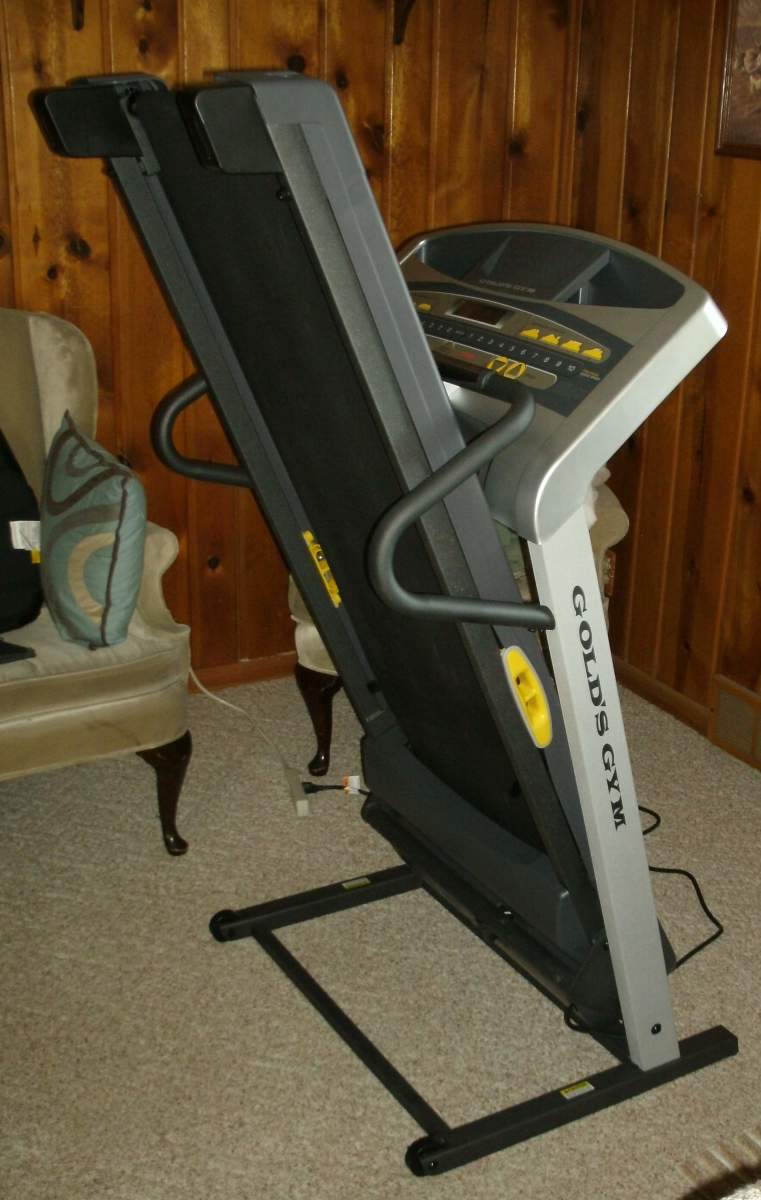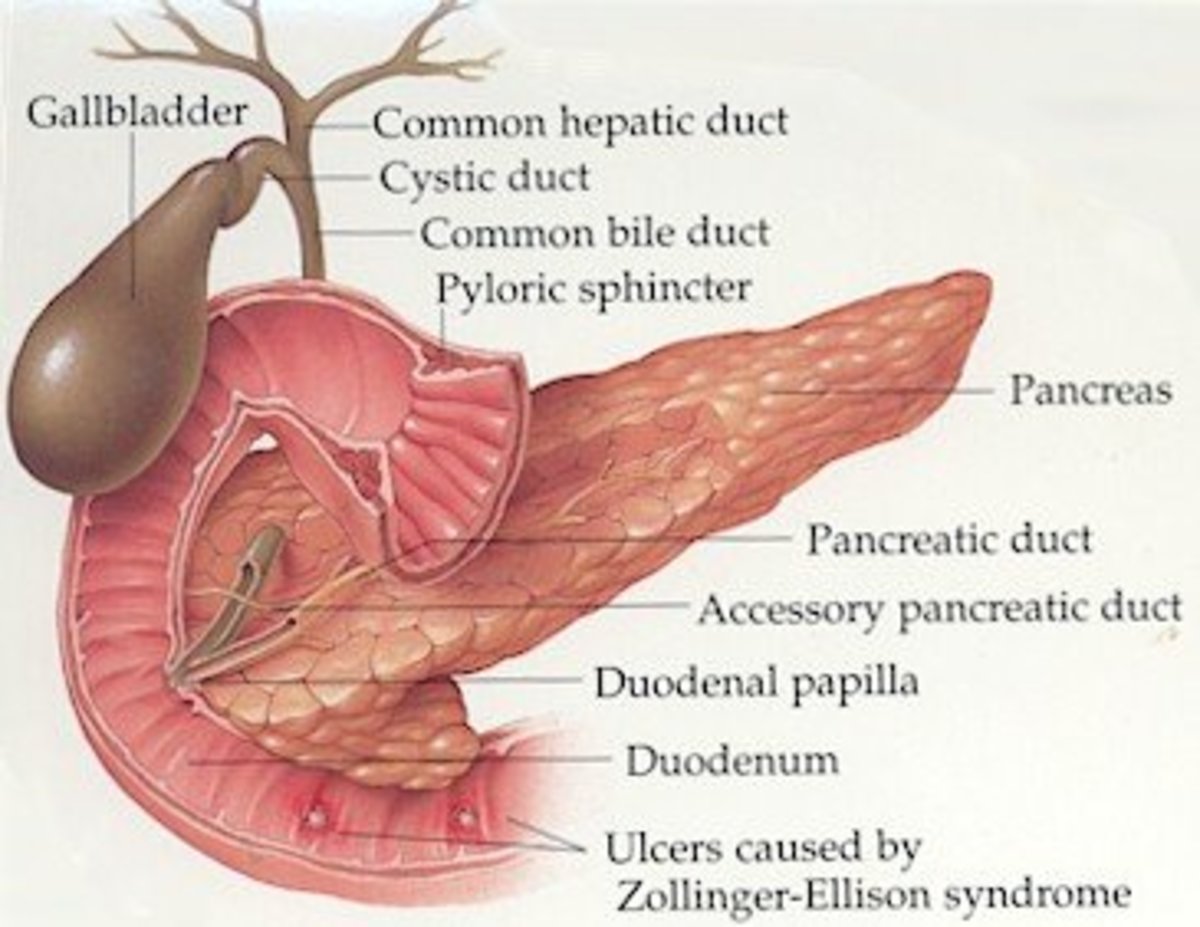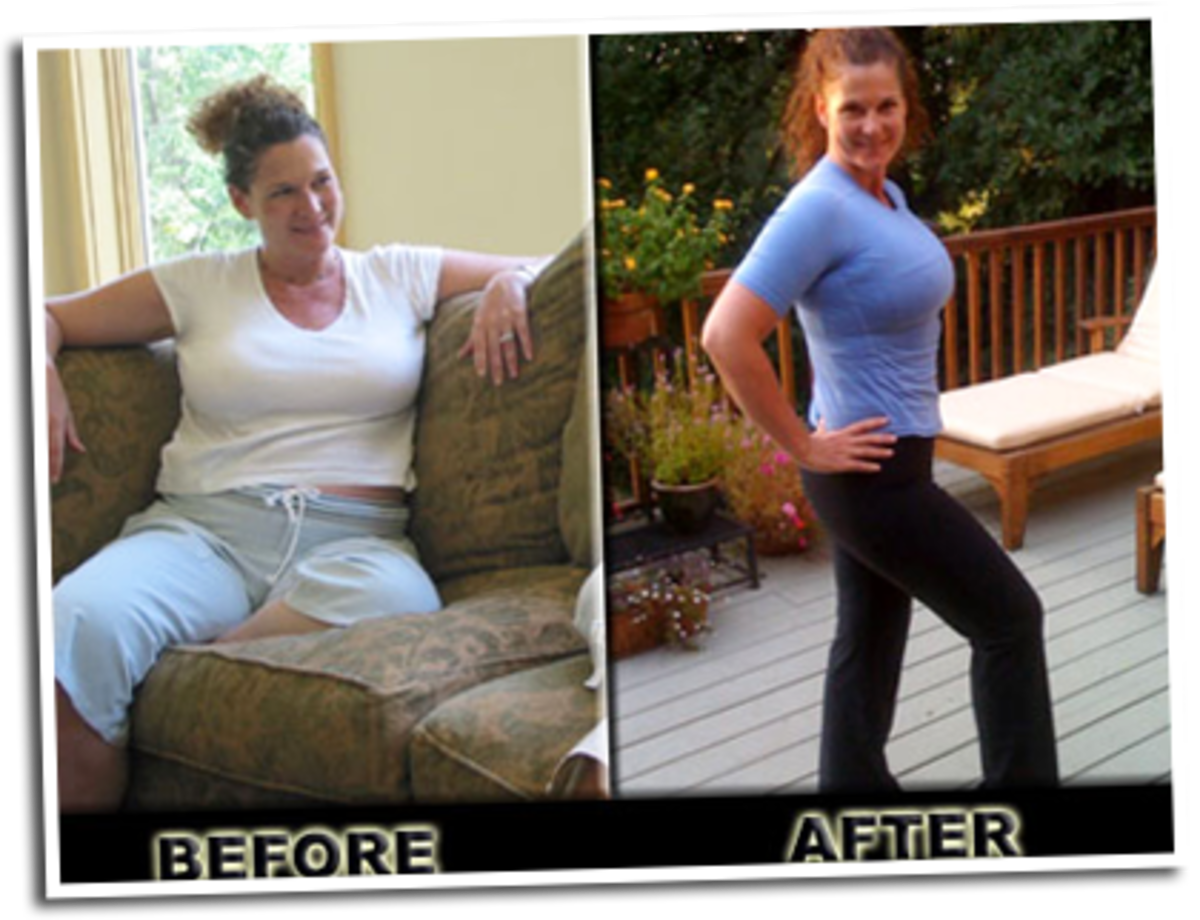Promote Heart Health and Prevent Heart Disease
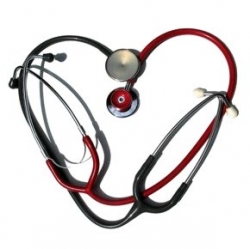
Promote Heart Health Year 'Round
February is officially American Heart Month, but you can learn about promoting heart health and preventing heart disease year 'round.
You may wonder, "Why should I be concerned about heart disease?"
Heart disease is the leading cause of death for both men and women in the United States. Stroke is the third leading cause of death. There are many things you can do to improve your heart health and lessen your risks of heart disease.
Learn ways to promote your heart health, reduce your risk of heart disease, how to recognize the signs of a heart attack or stroke and how to respond in case of a loved one is experiencing a heart attack or stroke.
Getting educated on heart health and heart disease is a heart-ful present for yourself and your loved ones.
Hear Stethoscopes by Lusi
Reasons to Keep Your Heart Healthy
- For Yourself
- For Your Loved Ones
- For Your Children
- For Your Grandchildren.
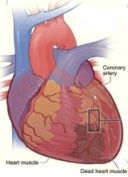
What is Heart Disease?
Background Information on Heart Disease Worth Knowing
Heart disease is a number of abnormal conditions affecting the heart and the blood vessels in the heart.
Types of heart disease include:
- Coronary artery disease (CAD)
- - CAD is the most common type and is the leading cause of heart attacks. With CAD, the arteries become hard and narrow. Blood has a hard time getting to the heart, so the heart does not get all the blood it needs.
- CAD can lead to:
- Angina
- - Angina is chest pain or discomfort that happens when the heart does not get enough blood. It may feel like a pressing or squeezing pain, often in the chest, but sometimes the pain is in the shoulders, arms, neck, jaw, or back. It can also feel like indigestion (upset stomach). Angina is not a heart attack, but having angina means you are more likely to have a heart attack.
- Heart attack
- - A heart attack occurs when an artery is severely or completely blocked, and the heart does not get the blood it needs for more than 20 minutes.
- Heart failure
- - Heart Failure occurs when the heart is not able to pump blood through the body as well as it should. This means that other organs, which normally get blood from the heart, do not get enough blood. It does NOT mean that the heart stops.
- Heart arrhythmias
- - Arrythmias are changes in the beat of the heart. Most people have felt dizzy, faint, out of breath or had chest pains at one time. These changes in heartbeat are, for most people, harmless. As you get older, you are more likely to have arrhythmias.
Image from National Heart, Lung and Blood Institute. Coronary Artery Disease.
Did You Know...Facts about Heart Disease
- Cardiovascular (Heart) disease is the No. 1 killer of both men and women in the United States.
- Stroke is also caused by a cardiovascular disease that affects the blood vessels that supply blood to the brain.
- Stroke is the third leading cause of death in the United States.
- Lifestyle choices, such as making poor food choices, inactivity and tobacco use are major contributors to cardiovascular disease.
- Seventy percent of Americans don't get enough exercise, blaming lack of time and lack of motivation.
- Physical inactivity significantly increases the risk of heart disease and stroke.
- Eating a healthy diet and making good lifestyle choices are the best weapons you have to fight cardiovascular disease.
- Some experts believe that physical activity should be the primary focus of efforts to prevent cardiovascular disease.
Ways to Lessen Your Risk of Heart Disease
1. Eat a Heart-healthy diet.
2. Get at least 30 minutes of exercise daily.
3. Know your risk factors, including family history.
4. Get your cholesterol and blood pressure checked.
5. Manage your stress.
Prevent Heart Disease - Promote Heart Health
- What is Heart Disease?
- Atherosclerosis - The Effects of Heart Disease
- Go Red - American Heart Disease Public Awareness Campaign
- Women and Heart Disease
- The Heart Truth - Women and Heart Disease
- Ways to Promote Heart Health
- Balance Calories In with Your Activity and Exercise
- Choose to Move
- Take the Start! Challenge
- Heart Benefits of Walking
- AHA Diet Recommendations - Eat More of These
- AHA Diet Recommendations - Eat Less of These
- Lifestyle Changes to Manage Coronary Artery Disease
- Learn to Recognize Signs of a Heart Attack
- Learn to Recognize Signs of a Stroke
- If in Doubt - Dial 9-1-1
- More Resources on Heart Disease
- More Resources on Stroke
What can happen in your vessels.
Go Red For Women celebrates the energy, passion and power we have as women to band together to wipe out heart disease and stroke.
Thanks to the participation of millions of people across the country, the color red and the red dress now stand for the ability all women have to improve their heart health and live stronger, longer lives.
- Go Red For Women
Go Red for Woman Home page. - Go Red For Women : National Wear Red Day
Join thousands of women, companies and organizations and cities across America on National Wear Red Day, Friday, February 1, 2008.
Go Red Public Service Announcement on YouTube
Go Red Dress Pin in the Amazon Spotlight

Become the Heart of Go Red on YouTube
More information on The Heart of Go Red
Go Red For Women is calling on real women from across the country to become The Heart of Go Red by sharing their heart health stories. It's an opportunity to represent the movement in its upcoming 2008-2009 campaign and have a chance to appear in a TV special on women and heart disease.
- Go Red for Women
Find out more about the Go Red for Women Campaign. - More information on Becoming the Heart of Go Red
Learn details on sharing your story in the Heart of Go Red by downloading this pdf file.
Heart disease is still the #1 killer of women in the United States with over 460,000 women dying each year.
Join with thousands of women, companies and organizations and cities across America on National Wear Red Day, Friday, February 1, 2012. By wearing red you'll be showing your support and helping the American Heart Association support ongoing research and education about women and heart disease.
National Wear Red Day has its own dress code. Wear your favorite red clothes or accessory - a red blouse, a red dress pin, a fabulous red handbag - put on red lipstick, or sport a red tie and red socks. Go red in your own fashion to show your support for women and the fight against heart disease.
For More Information see the National Wear Red Page.
Women and Heart Disease - the Heart Truth
One in four women dies from heart disease. It's the #1 killer of women, regardless of race or ethnicity. It also strikes at younger ages than most people think, and the risk rises in middle age. And, two-thirds of women who have heart attacks never fully recover.
Both men and women have heart attacks, but more women who have heart attacks die from them. Treatments can limit heart damage but they must be given as soon as possible after a heart attack starts. Ideally, treatment should start within one hour of the first symptoms.
Sources: Women's Health.gov. January 2007. Heart Disease.
Graphic Source: What is the Heart Truth? Leading Causes of Death for Women. National Heart, Lung and Blood Institute.
The Heart Truth is that heart disease is the #1 killer of American women. In fact, one in four women dies of heart disease. But heart disease can also lead to disability and a significantly decreased quality of life.
To make women more aware of the danger of heart disease, the National Heart, Lung, and Blood Institute (NHLBI) and partner organizations are sponsoring a national campaign called The Heart Truth. The campaign's goal is to give women a personal and urgent wakeup call about their risk of heart disease.
Celebrate the kick-off to American Heart Month and National Wear Red Day on Friday, February 1, 2008, by wearing red in support of women's heart health.
Source: National Heart, Lung, and Blood Institute. What is the Heart Truth?
The Heart Truth Red Dress Campaign on YouTube
Limited Edition Go Red Barbies
American Heart Association Resources
- American Heart Association
The home page for the American Heart Association. - Heart Attack
Heart disease is the leading killer of Americans today; heart attack is its most visible sign. Find an explanation of heart attack, prevention guidelines, patient information and more here. - Risk Factors and Coronary Heart Disease
This explains the major risk factors for coronary heart disease and steps you can take to reduce your risk. - High Blood Pressure
Many people have high blood pressure for years without knowing it. Uncontrolled high blood pressure can lead to stroke, heart attack, congestive heart failure or kidney failure. - Cholesterol
Cholesterol can be both good and bad, so it's important to learn what cholesterol is, how it affects your health and how to manage your blood cholesterol levels. - Learn About Stroke
Learn about stroke the nation's third leading cause of death. - Children's Health
Learn about Children's Health and raising healthier children from the American Heart Association.
Basic Information on Preventing Heart Disease
(You don't need to divulge the numbers. A simple yes or no is good.)
Do you know your blood pressure and cholesterol?
You can easily promote heart health by adopting a few healthy changes to your lifestyle.
Reducing your chances of getting heart disease by taking these steps might be the most heart-ful present you can give to your Valentine.
- Know your blood pressure
- .
- Your heart moves blood through your body. If it is hard for your heart to do this, your heart works harder, and your blood pressure will rise. People with high blood pressure often have no symptoms, so have your blood pressure checked every 1 to 2 years.
- If you have high blood pressure, see your doctor for treatment options that may include lifestyle changes and medicine to help lower your blood pressure.
- Don't smoke
- .
- If you smoke, try to quit. If you're having trouble quitting, there are products and programs that can help. Ask your doctor or nurse for help.
- Get tested for diabetes
- . People with diabetes have high blood glucose (often called blood sugar). People with high blood sugar often have no symptoms, so have your blood sugar checked regularly. Having diabetes raises your chances of getting heart disease.
- If you have diabetes, see your doctor for treatment options that will include healthy eating, exercises and possible diabetes pills or insulin shots.
- Get your cholesterol and triglyceride levels tested
- .
- High blood cholesterol can clog your arteries and keep your heart from getting the blood it needs. This can cause a heart attack. Triglycerides are a form of fat in your blood stream. High levels of triglycerides are linked to heart disease in some people. People with high blood cholesterol or high blood triglycerides often have no symptoms, so have your blood cholesterol and triglyceride levels checked regularly.
- If your cholesterol or triglyceride levels are high, talk see your doctor about options for lower your cholesterol and triglyceride levels by eating better, exercising more and possible medication.
- Maintain a healthy weight
- .
- Being overweight raises your risk for heart disease. Calculate your Body Mass Index (BMI) to see if you are at a healthy weight.
- Eat a healthy diet and exercise at a moderate intensity for at least 30 minutes most days of the week. Start by adding more fruits, vegetables, and whole grains to your diet.
- Take a brisk walk on your lunch break or take the stairs instead of the elevator.
- Limit Alcohol
- .
- If you drink alcohol, limit it to no more than one drink (one 12 ounce beer, one 5 ounce glass of wine, or one 1.5 ounce shot of hard liquor) a day.
- Find healthy ways to cope with stress
- .
- Lower your stress level by talking to your friends, exercising, or writing in a journal.
Know the Calories You Need
Start by knowing how many calories you should be eating and drinking to maintain your weight then don't eat more calories than you know you can burn up every day.
Keeping a stable weight involves maintaining a balance between the calories or food that you take in during the day and the calories that you use up in activity and exercise, so that
- Calories Eaten = Calories Burned
Increase the amount and intensity of your physical activity to match the number of calories you take in.
Aim for at least 30 minutes of moderate physical activity on most days of the week or - best of all - at least 30 minutes every day.
Benefits of Regular Activity
Regular physical activity can help you maintain your weight, keep off weight that you lose and help you reach physical and cardiovascular fitness. If you can't do at least 30 minutes at one time, you can add up 10-minute sessions throughout the day.
Source: American Heart Association. 2006. Diet and Lifestyle Recommendations.
Image Source: Modified Microsoft Image.
Books on Living a Health Lifestyle on Amazon

Choose to Move and Start! Get You Going
In addition to raising awareness about Heart Disease during the month of February, the American Heart Association is sponsoring several new programs to get people moving. One for Women is Choose to Move, the other for anyone is the Start! program.
Choosing to Move and getting Started improving your heart is the best Valentine present you can give to your self and to your loved ones.
Choose To Move is a great way to help you improve your heart health, by showing you how physical activity can fit into your busy life.
The 12-week program takes you step-by-step through simple exercises and offers great tips to increase physical activity and reach goals.
Sponsored by the American Heart Association.
- Choose To Move
Choose To Move is a free 12-week physical activity program for women. It shows women how to get active, eat healthfully and love their heart in just 12 weeks. - Choose To Move - Learn More
You can reduce your risk of heart disease and stroke by building more physical activity into your existing routine not new routines that are hard to fit into your day. - Choose to Move Blog
Read the Choose to Move Blog, where women choose, they move and then blog to stay on course.
American Heart Association - Start! on YouTube
Start! is the American Heart Association's national campaign that calls on Americans and their employers to create a culture of physical activity for longer, heart-healthy lives through walking.
- Start! Challenge
With the start of the New Year comes the Start! Challenge. The goal is simple - to help Americans like you get healthier. - What is Start?
Learn more about the American Heart Association's Start! Campaign - Start! Walking Program for Individuals
The American Heart Association's Start! Walking Program helps companies encourage employees and co-workers to live healthier, happier lives.
American Heart Association's Walking CD

There are many benefits to your heart and your health from walking. Walking can help in relieving stress and boosting your spirits to helping manage some diseases.
Here are just some of the known heart benefits of walking:
Source:
Mayo Clinic Staff. December 2006. Walking for fitness: How to trim your waistline, improve your health. Fitness. Tools for Healthier Life.
- Reduce your risk of a heart attack.
Walking keeps your heart healthy by lowering the "bad" cholesterol (low-density lipoprotein, LDL) cholesterol and raising the "good" cholesterol (high-density lipoprotein, HDL) which reduces the risk of a heart attack.
- Reduce your risk of developing high blood pressure.
A regular walking program also reduces your risk of developing high blood pressure, a factor that also contributes to heart disease.
- Reduce your risk of developing type 2 diabetes.
Regular exercise reduces your risk of developing type 2 diabetes. If you're a woman, overweight and at a high risk of diabetes, walking can improve your body's ability to process sugar (glucose tolerance).
- Reduce your weight.
Walking is an excellent way of burning calories which will help in losing weight.
- Manage your blood pressure.
If you already have high blood pressure, walking may reduce it.
- Manage stress and boost your spirits.
Going for a brisk walk is a great way to reduce stress.
- Manage your weight.
Walking burns calories, which can help in managing weight. Middle-aged women who walk more than 10,000 steps a day have lower levels of body fat than do women who are less active.
- Manage your diabetes.
If you already have type 2 diabetes, taking part in a regular walking program can improve your body's ability to process sugar, lower your blood sugar, reduce your risk of heart disease and help you live longer.
Walking Kit in the Amazon Spotlight

To get the nutrients you need, choose foods like vegetables, fruits, whole-grain products and fat-free or low-fat dairy products most often.
Source: American Heart Association. 2006. Diet and Lifestyle Recommendations.
Image Source: Photo Source: Meliha Gojak. Assorted Fruit. Royalty Free Use.
- Eat a Variety of Fruits and Vegetables. Vegetables and fruits are high in vitamins, minerals and fiber - and they're low in calories. Eating a different fruits and vegetables may help you control your weight and your blood pressure.
- Eat Whole Grains.
Unrefined whole-grain foods contain fiber that can help lower your blood cholesterol and help you feel full, which may help you manage your weight.
- Eat fish at least twice a week.
Recent research shows that eating oily fish containing omega-3 fatty acids (for example, salmon, trout, and herring) may help lower your risk of death from coronary artery disease.
AHA Diet Recommends - Eat These Less Often
The American Heart Association recommends eating Nutrient-Poor foods less often.
Limit foods and beverages that are high in calories but low in nutrients, and limit how much saturated fat, trans fat, cholesterol, and sodium you eat.
Read labels carefully - the Nutrition Facts panel will tell you how much of those nutrients each food or beverage contains.
Source: American Heart Association. 2006. Diet and Lifestyle Recommendations.
- Choose lean meats and poultry without skin and prepare them without added saturated and trans fat.
- Select fat-free, 1 percent fat, and low-fat dairy products.
- Cut back on foods containing partially hydrogenated vegetable oils to reduce trans fat in your diet.
- Cut back on foods high in dietary cholesterol. Aim to eat less than 300 milligrams of cholesterol each day.
- Cut back on beverages and foods with added sugars.
- Choose and prepare foods with little or no salt. Aim to eat less than 2,300 milligrams of sodium per day.
- If you drink alcohol, drink in moderation. That means one drink per day if you're a woman and two drinks per day if you're a man.
AHA Cookbook on Low Fat Foods on Amazon

Ways to Manage Coronary Artery Disease - From the National Heart, Lung and Blood Institute
Making lifestyle changes can often help prevent or treat CAD. For some people, these changes may be the only treatment needed:
Source:
Coronary Artery Disease. National Heart, Lung and Blood Institute.
- Follow a heart healthy eating plan to prevent or reduce high blood pressure and high blood cholesterol and to maintain a healthy weight
- Increase your physical activity. Check with your doctor first to find out how much and what kinds of activity are safe for you.
- Lose weight, if you're overweight or obese.
- Quit smoking, if you smoke. Avoid exposure to secondhand smoke.
- Learn to cope with and reduce stress.
Healthy Eating Books for Promoting Heart Health
AHA's Healthy Recipes in the Amazon Spotlight

You might be wondering why you should be concerned about Heart Disease or Coronary Artery Disease. There are some pretty compelling reasons to pay attention to this disease.
Coronary heart disease is a silent disease. You may have heart disease for years and be unaware of it.
The first presentation is often sudden death, especially in women.
I have pulled a few quotes from medical journals that discuss the sudden, unexpected course of Coronary Heart Disease.
- It is now recognized that in a proportion of patients the first manifestation of coronary artery disease is sudden collapse and death, due to acute myocardial infarction and/or ventricular arrhythmias.
- The absence of premonitory symptoms emphasizes the need for a population approach to primary prevention.
It is this absence of symptoms to let you know that you have coronary heart disease that underscores the need to be screening people for heart disease, before it happens.
- Coronary artery disease (CAD) usually coexists with atherosclerosis of other arterial trees and is accelerated by several risk factors. It may remain asymptomatic for a long period affecting the vessel wall with no lumen encroachment.
- However, its course may change dramatically when complicated by thrombosis arising from ruptured atherosclerotic plaques leading to myocardial infarction or sudden death, which are often the first manifestations.
Image Source: Sophie. Heart. Royalty Free Use.
Act in Time to Heart Attack Signs on YouTube
U.S. Department of Health and Human Services National Institutes of Health National Heart, Lung, and Blood Institute Act in Time to Heart Attack Signs.
The dramatic, moving stories of three heart attack survivors and their families illustrate the importance of heeding heart attack warning signs and seeking medical care quickly. They vividly convey how a real heart attack may differ from the stereotypical "movie heart attack" and how getting immediate treatment can save lives.
The warm and sympathetic narration by an emergency department physician explains what a heart attack is, the treatments that can save lives if given quickly, why many heart attack victims delay seeking care, and how to make a heart attack survival plan.
Some heart attacks are sudden and intense - the "movie heart attack," where no one doubts what's happening. But most heart attacks start slowly, with mild pain or discomfort. Often people affected aren't sure what's wrong and wait too long before getting help.
Here are signs that can mean a heart attack is happening:
- Chest discomfort.
Most heart attacks involve discomfort in the center of the chest that lasts more than a few minutes, or that goes away and comes back. It can feel like uncomfortable pressure, squeezing, fullness or pain.
- Discomfort in other areas of the upper body.
Symptoms can include pain or discomfort in one or both arms, the back, neck, jaw or stomach.
- Shortness of breath with or without chest discomfort.
- Breaking out in a cold sweat
- Nausea
- Lightheadedness
Source: Women's Health.gov. January 2007. Heart Disease.
Stroke is also caused by a cardiovascular disease. It affects the blood vessels that supply blood to the brain.
Source: American Heart Association. Heart Attack, Stroke and Cardiac Arrest Warning Signs
Image Source: Rodrigo Galindo. Brain. Royalty Free Use.
The American Stroke Association says the following list are the warning signs of stroke.
If you or someone with you has one or more of these signs, don't delay! Immediately call 9-1-1 or the emergency medical services (EMS) number so an ambulance (ideally with advanced life support) can be sent for you.
- Sudden numbness or weakness of the face, arm or leg, especially on one side of the body
- Sudden confusion, trouble speaking or understanding
- Sudden trouble walking, dizziness, loss of balance or coordination
- Sudden, severe headache with no known cause
Source: Women's Health.gov. May 2006. Stroke.
Image: Modified Microsoft Image.
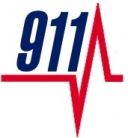
If in Doubt - Dial 9-1-1
Even if you're not sure it's a heart attack, have it checked out. Minutes matter! Fast action can save lives - maybe your own. Don't wait more than five minutes to call 9-1-1.
Calling 9-1-1 is almost always the fastest way to get lifesaving treatment. Emergency medical services staff can begin treatment when they arrive - up to an hour sooner than if someone gets to the hospital by car. The staff are also trained to revive someone whose heart has stopped. Patients with chest pain who arrive by ambulance usually receive faster treatment at the hospital, too.
If you can't access the emergency medical services (EMS), have someone drive you to the hospital right away. If you're the one having symptoms, don't drive yourself, unless you have absolutely no other option.
Source: American Heart Association
More Resources on Heart Disease
- The Heart Truth: A Campaign For Women About Heart Disease
A Campaign to raise heart awareness by the U.S. Department of Health and Human Services. - Women Heart Disease, Heart Attacks, Coronary, Cardiac Health
The National Coalition for Women with Heart Disease. Providing information and resources related to cardiac health, coronary disease and preventing heart attacks. - Coronary Artery Disease
Information on Coronary Artery Disease from the National Heart, Lung and Blood Institute.
More Resources on Stroke
- National Institute of Neurological Disorders and Stroke (NINDS)
National Institute of Neurological Disorders and Stroke mission is to reduce the burden of neurological disease - a burden borne by every age group, by every segment of society, by people all over the world. - National Stroke Association
National Stroke Association provides information on stroke prevention, treatment, rehabilitation and making the most of life after stroke. - Stroke American Heart Association
Stroke is a cardiovascular disease. It affects the blood vessels that supply blood to the brain. - American Stroke Association
American Stroke Association goal is to reduce stroke and risk by 25 percent by 2010.
Your place for feedback, comments or questions.
